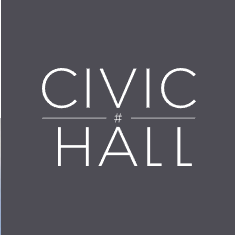Category: Commons
TOWARD (A) CIVIC TRUST
- Post author By Civicist
- Post date June 17, 2015
- No Comments on TOWARD (A) CIVIC TRUST
TOWARD (A) CIVIC TRUST
- SEAN MARTIN MCDONALD
- June 17, 2015
- 4:54 pm
A new model—the Civic Trust—may help protect the public’s interest as civic tech evolves.

This is the second installment of three pieces on the business of civic tech and how we should be rethinking that business. You can find Sean McDonald’s first piece here.
Trust in institutions, globally, is at an all-time low. Government, business, journalism, and even nonprofits, are all losing the public’s faith. The U.S. government, in particular, has hovered near its lowest approval ratings in history for an uncomfortably long time. And, given recent history, it’s hard to blame us.
One reason is that we’re using the same organizational models we’ve used for decades. The way that we legally structure organizations (Corporations, 501(c)3s, Limited Liability Companies, etc.) defines their incentives, values, decision-making structures, and priorities. Incorporation models are the DNA of organizations—even those with revolutionary approaches to collective action—and that DNA replicates the same structural flaws and risks as traditional organizations. We are trying to build the future with the same organizational structures that gave us the present and—as Einstein said, “We cannot solve our problems with the same thinking we used to create them.” It’s fair to say that decision making structures are, collectively, how we think.
Amidst the global fallout in trust, there are many trying to build technological solutions to our trust deficit—both better verification and “trustless” systems. The most recent (and, arguably, credible) technology solution is the blockchain—the distributed administration and ledger architectures made famous by Bitcoin. The blockchain offers a huge amount of potential—in particular, it decentralizes administration (and administration costs), improves transparency (for those capable of understanding it), and increases the reliability of complex interactions. As a way to contextualize blockchain’s potential impact on the ecosystem and evolution of technology adoption, Nick Grossman’s “Venture capital vs. community capital,” is a great overview.
However, as Rachel O’Dwyer’s “The Revolution Will (not) Be Decentralized: Blockchains” points out—the primary challenges in collective action, while interesting technologically, still come down to mediating relationships, managing governance structures, and being able to set common standards. Blockchains create huge opportunities to transparently design and manage distributed processes, but they don’t enable us to evolve norms, resolve disputes arising from the transactions they administer, or meaningfully solve the definitional issues that lie at the core of our representative governance models (more on those here). To take the inverse of the “law cannot solve technology’s problems,” trope—we can’t expect technology to solve our organizational problems.
One of our most challenging organizational problems is how to balance the financial needs of information channels and the integrity of the information and relationships the channels represent. Publishing platforms make it even more complicated—they use their content and engagement structures to claim and monetize our behavior and relationships. The majority of privately owned platforms—even well intentioned ones—sell some form of access to users, data, services, and servants—all of which distorts the integrity of the underlying relationships. As respected, anonymous cybersecurity expert @SwiftonSecurity tweeted recently:
And that’s where it gets really concerning—the more civic groups and governments rely on commercial technologies as intermediaries, the more potential there is to strain or distort the already struggling trust relationships between the public and institutions. As Erica R.H. Fuchs noted in a research paper about DARPA, institutions that develop technology require embedded network governance, meaning that the network should have an built-in role in making decisions. According to Fuchs, that means more than just technology—it includes bridging the policy, business, and legal implications of technology. That, as Stanford’s Lucy Bernholz notes, means not only changing what civil society groups do, it means changing how they work.
So. How do we build trust in organizations? More importantly, how do we make organizations more trustworthy? I’m a big believer in progress through open, participatory processes. Still, they’re big questions that will require a lot of experimentation to answer. Finding socially conscious ways and spaces to experiment will be incredibly important, especially in an intellectual property climate that allows companies to own the ways that we engage with each other. A fundamental part of building trust in those organizations will involve ensuring that the underlying ideas that redefine collective engagement don’t disappear or irreparably change when the companies that build them do. And, like most forms of both collective action and technology, we’ll probably end up with more than one answer.
One answer of how to build those socially conscious, safe spaces may be a new approach to an old structure: the Civic Trust*. Traditionally, trusts are privately created legal agreements that create systems of management and governance over a particular set of assets, according to a set of values or desired goals. Trusts also create a legally enforceable fiduciary duty to the beneficiary, which can be defined when they’re created. For a broad overview of Trusts, this article from Findlaw is helpful.
The use of Trusts to protect a set of common resources or values isn’t new. Natural resources are often donated to governments through Public Trusts, which can set standards around the maintenance and care of that resource. Similarly, many Trusts are created to ensure the integrity and sustainability of institutions—in his recent farewell to readers, the Guardian’s Alan Rusbridger cited how important the Scott Family Trust has been in helping maintain the newspaper’s independence. Similarly, in this article, Keith Porcaro lays out an incredibly smart approach to how Trusts could be used to protect user interests in the use of their data. Even venture capitalists form trusts to manage risk. But, in their present form, Trusts—like almost every other incorporation model—focus on specific inputs (resources, financial investment, votes) and less well-defined outputs (conservation, independence, profit, democracy).
That’s where a Civic Trust are different. Civic Trusts focus on ensuring that transparent and meaningful participation processes are built into the way that technology products evolve. As most social platforms prove, well designed engagement processes are resources—and in publicly supported technology design, how they’re governed matters.
Here’s how it works: A Civic Trust would be created by an organization that wants to be able to make meaningful guarantees to protect its users and customers. The Civic Trust would create an independent organization that owns the code and data resources created by the creator, using limited, revocable licenses to give for-profits, nonprofits, and governments the right to use, adapt, and sell products based on the underlying code. These licenses would give the Civic Trust the ability to audit and ensure that basic standards of participation were met in the way both the technology and organizations evolved (things like rate of versioning, feature development, security defaults, dispute resolution processes, data use, etc.). As opposed to focusing on the value of the outcomes, Civic Trusts would focus on the values embedded in the decision making processes of the user organizations.
This approach isn’t without precedent. Civic Trusts work the same way that Apple and Google are structured, except that instead of using the structure to avoid taxes, it would use it to build and steward truly open and participatory governance processes (in technology). Civic Trusts could create safe spaces to experiment with governance and decision making processes, hardcoding a public advocate into the organizational DNA of the companies and technologies that connect us. Civic Trusts would help us define embedded network governance in the public interest.
My next post will dive into the nitty gritty of a Civic Trust, including sample contractual provisions and ideas. At its core, though, Civic Trusts are a recognition of the importance of ingraining participation in public interest technologies. Ultimately, we have yet to figure out how to design organizations that can balance the public interest with the expectations and requirements of their funders—as Paul Klein notes, even nonprofits struggle.
While I’m sure that there are many who disagree, that disagreement is exactly why we need Civic Trusts. We don’t have to agree, but we need the space to experiment and disagree in public. After all, as long as we, the public, invest in privately owned platforms—with our time, data, money, or anything else of value—we should have a meaningful voice about how they treat us, grow, and change. Otherwise, who would trust them?
Sean Martin McDonald is the CEO of FrontlineSMS. Frontline helps governments, businesses, technology providers, and nonprofit organizations translate what they do into text messaging microservices, enabling them to reach more people, more efficiently.

